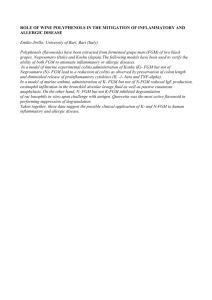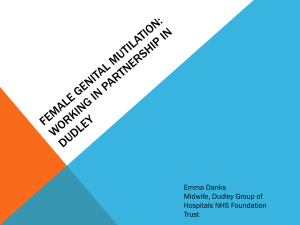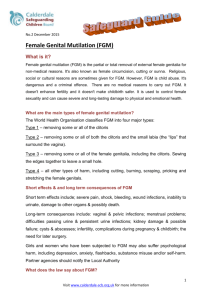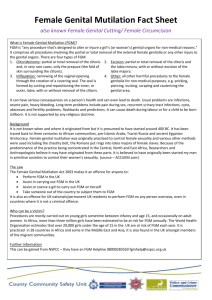1 - themis
advertisement
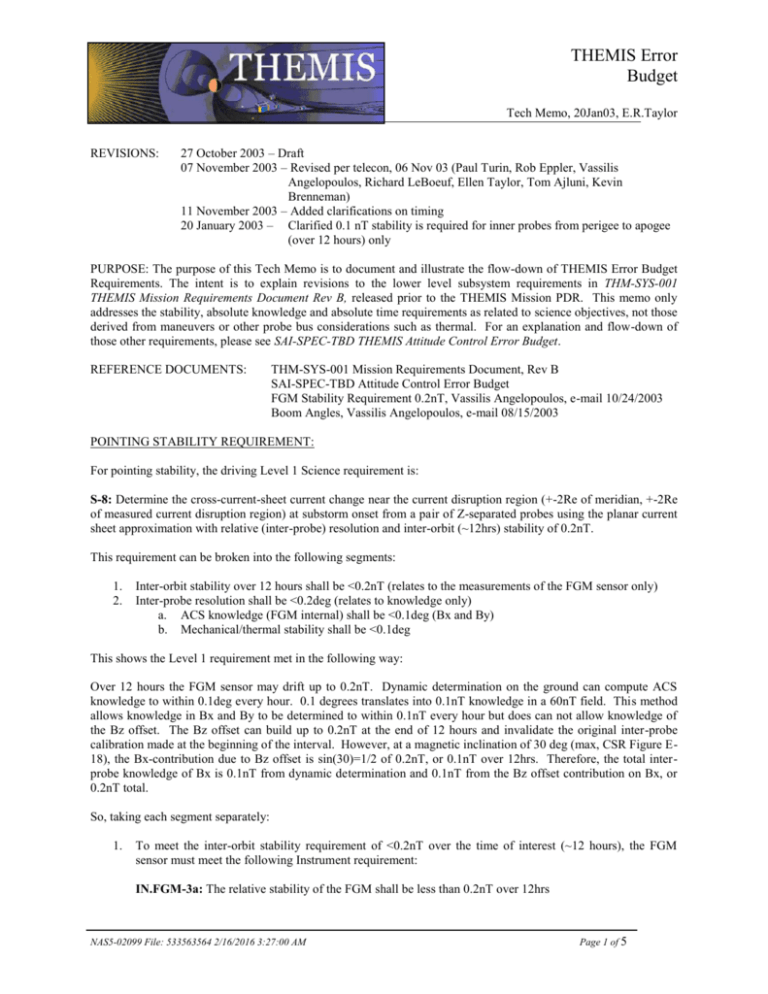
THEMIS Error Budget Tech Memo, 20Jan03, E.R.Taylor REVISIONS: 27 October 2003 – Draft 07 November 2003 – Revised per telecon, 06 Nov 03 (Paul Turin, Rob Eppler, Vassilis Angelopoulos, Richard LeBoeuf, Ellen Taylor, Tom Ajluni, Kevin Brenneman) 11 November 2003 – Added clarifications on timing 20 January 2003 – Clarified 0.1 nT stability is required for inner probes from perigee to apogee (over 12 hours) only PURPOSE: The purpose of this Tech Memo is to document and illustrate the flow-down of THEMIS Error Budget Requirements. The intent is to explain revisions to the lower level subsystem requirements in THM-SYS-001 THEMIS Mission Requirements Document Rev B, released prior to the THEMIS Mission PDR. This memo only addresses the stability, absolute knowledge and absolute time requirements as related to science objectives, not those derived from maneuvers or other probe bus considerations such as thermal. For an explanation and flow-down of those other requirements, please see SAI-SPEC-TBD THEMIS Attitude Control Error Budget. REFERENCE DOCUMENTS: THM-SYS-001 Mission Requirements Document, Rev B SAI-SPEC-TBD Attitude Control Error Budget FGM Stability Requirement 0.2nT, Vassilis Angelopoulos, e-mail 10/24/2003 Boom Angles, Vassilis Angelopoulos, e-mail 08/15/2003 POINTING STABILITY REQUIREMENT: For pointing stability, the driving Level 1 Science requirement is: S-8: Determine the cross-current-sheet current change near the current disruption region (+-2Re of meridian, +-2Re of measured current disruption region) at substorm onset from a pair of Z-separated probes using the planar current sheet approximation with relative (inter-probe) resolution and inter-orbit (~12hrs) stability of 0.2nT. This requirement can be broken into the following segments: 1. 2. Inter-orbit stability over 12 hours shall be <0.2nT (relates to the measurements of the FGM sensor only) Inter-probe resolution shall be <0.2deg (relates to knowledge only) a. ACS knowledge (FGM internal) shall be <0.1deg (Bx and By) b. Mechanical/thermal stability shall be <0.1deg This shows the Level 1 requirement met in the following way: Over 12 hours the FGM sensor may drift up to 0.2nT. Dynamic determination on the ground can compute ACS knowledge to within 0.1deg every hour. 0.1 degrees translates into 0.1nT knowledge in a 60nT field. This method allows knowledge in Bx and By to be determined to within 0.1nT every hour but does can not allow knowledge of the Bz offset. The Bz offset can build up to 0.2nT at the end of 12 hours and invalidate the original inter-probe calibration made at the beginning of the interval. However, at a magnetic inclination of 30 deg (max, CSR Figure E18), the Bx-contribution due to Bz offset is sin(30)=1/2 of 0.2nT, or 0.1nT over 12hrs. Therefore, the total interprobe knowledge of Bx is 0.1nT from dynamic determination and 0.1nT from the Bz offset contribution on Bx, or 0.2nT total. So, taking each segment separately: 1. To meet the inter-orbit stability requirement of <0.2nT over the time of interest (~12 hours), the FGM sensor must meet the following Instrument requirement: IN.FGM-3a: The relative stability of the FGM shall be less than 0.2nT over 12hrs NAS5-02099 File: 533563564 2/16/2016 3:27:00 AM Page 1 of 5 THEMIS Error Budget Tech Memo, 20Jan03, E.R.Taylor 2. To meet the inter-probe resolution requirement of <0.2deg, the requirement is split into two components: (a) ACS knowledge (FGM internal); and (b) mechanical/thermal stability. For (a), the FGM-to-spin axis angle can be dynamically determined to <0.1 degrees at 1-hour intervals by science data processing on the ground, assuming the FGM is also relatively stable over this period. Therefore, the following two requirements must be met: GS-SOC-13: ACS knowledge (FGM-to-spin axis) shall be estimated to within 0.1 degree every hour using ground-based processing; and IN.FGM-3b: The relative stability of the FGM shall be less than 0.1nT over 1hr For (b), mechanical/thermal stability is captured in the following requirement: IN.BOOM-2: Magnetometer Boom stability shall be better than 0.1 degree More explicitly, this requirement applies from the FGM sensor to Probe Z-axis. Therefore, the 0.1 degree should split between two components: (i) contribution from the boom (sensor mounting and boom stability); and (ii) contribution from the bus (boom mounting and thermal stability of deck). Stability of the probe geometric axis to principle axis is considered negligible, allowing the FGM-to-Ecliptic to be known within the required 0.2 degrees including sensor instability as well. To accomplish (i) and (ii), hole tolerances, mounting templates, mounting edges, etc. will be implemented as indicated in the FGM ICDs. Adding up all components of Segment 2, 0.2deg knowledge can be computer every hour, and consequently over a 12-hour period. However, the dynamic determination of FGM-to-spin axis angle of <0.1 degree over 1-hour interval is only possible at the P3/4/5 apogee assuming stable offsets and booms within that period (easier at perigee). Therefore, eclipse periods and post-shadow intervals of temperature stabilization (period of rapid temperature variations) should be excluded. ABSOLUTE KNOWLEDGE REQUIREMENT: For absolute knowledge, the driving Level 1 Science requirement is: S-6: Track between probes the earthward ion flows (400km/s) from the reconnection site and the tailward moving rarefaction wave in the magnetic field, and ion plasma pressure (motion at 1600km/s) with sufficient precision (dV/V=10% or V within 50km/s whichever is larger, dB/B=10%, or B within 1nT whichever is larger, dP/P=10%, or P within 0.1nPa whichever is larger) to ascertain macroscale coupling between current disruption and reconnection site during >10 substorm onsets (>188hrs of four-probes aligned within dY of +-2Re). This requires absolute FGM orientation on one probe to 1deg (translated from 1nT in 10nT field, near the current sheet where flows and current disruption measurements are made). This requirement can be broken up into the following components, where the addition of all components is less than the 1-degree total: 1. Probe spin axis inertial orientation shall be < 1 degree a. ACS knowledge (FGM-to-spin axis) shall be <0.1 deg (apogee and perigee) b. ACS inertial knowledge (Spin-to-Probe Z axis) shall be <0.5 deg (around 6 hours at perigee) i. Deployment of the boom shall be <1 deg. c. Magnetometer drift shall be negligible (drift is 0.2nT/300nT, or <0.03 deg, at perigee) d. Contribution from probe magnetics shall be <0.1 deg (equivalent to DC stability <0.1nT at 2m) e. Boom stability shall be <0.1 deg f. Bus stability (Probe Z axis-to-Izz principle axis) shall be negligible NAS5-02099 File: 533563564 2/16/2016 3:27:00 AM Page 2 of 5 THEMIS Error Budget Tech Memo, 20Jan03, E.R.Taylor g. Time tag accuracy shall be <0.1 deg Again, taking each segment separately: 1. The direct flow-down of the Level 1 requirement is levied on ground system processing (GS-SOC-12 was PB-42 in MRD Rev A. See change log.): GS-SOC-12: The probe spin axis inertial orientation shall be estimated in ground-based processing to within 1 degree, 3 sigma To meet this requirement, the following components are considered: a. As with the stability requirement, the FGM-to-spin axis angle can be dynamically determined to <0.1 degrees at 1-hour intervals by science data processing on the ground, assuming the FGM is also stable over this period. Therefore, the following two requirements are levied: GS-SOC-13: ACS knowledge (FGM-to-spin axis) shall be estimated to within 0.1 degree using ground-based processing; and IN.FGM-3b: The relative stability of the FGM shall be less than 0.1nT over 1hr b. Perigee modeling of FGM data and spin-to-Probe Z axis gives inertial knowledge to <0.5deg from 6 hours around perigee, given an initial FGM deployment knowledge of 1deg. Therefore, the following two requirements are levied: GS-SOC-14: ACS knowledge (spin-to-Probe Z axis) shall be estimated to within 0.5 degree using ground-based processing IN.BOOM-1: Magnetometer Boom deployment shall be repeatable to 1 degree, 3 sigma. The 1 deg absolute knowledge budget relates to the need of the FGM, SCM and EFI instruments to inter-calibrate and have an apriori knowledge of where they will end up. Knowing that there is little spin ripple along SCM Bz, allows Bz to be selected as the waveform data quantity of choice. Therefore, the 1 deg repeatability of X/Y direction for MAG booms is more, not less critical, since that's the angle that is more difficult for FGM to determine. I.e, 1-deg repeatability is required in both spin-plane and Z directions. Note: 0.5 degree inertial knowledge is guaranteed from 6 hours around perigee only. However, note that the other components of the budget are c. Magnetometer drift can be considered negligible at perigee, given that the drift shall be less than 0.2nT in a 300nT field, or <0.03 deg. Thus, only following requirement is levied: IN.FGM-3a: The relative stability of the FGM shall be less than 0.2nT over 12hrs d. DC stability due to the probe field shall be <0.1nT at 2m drives the following magnetic cleanliness requirements: M-31a: DC magnetic noise radiated by the Probe and other instruments shall not exceed 5nT at 2 meters from the Probe (location of FGM sensor). NAS5-02099 File: 533563564 2/16/2016 3:27:00 AM Page 3 of 5 THEMIS Error Budget Tech Memo, 20Jan03, E.R.Taylor M-31b: DC magnetic field generated by the Probe subsystems and other instruments shall be stable to <0.1nT over 12hrs at 2m from the Probe (location of FGM sensor) over the operational temperature range of these subsystems and instruments. Assuming a 0.1nT stability is achieved, the absolute 5nT offset from the Probe can be accommodated if this offset is measured (see THM-SYS-002 Magnetics Contamination Control Plan). e. Boom stability shall be <0.1deg is met with the following requirement, distributed between a contribution from the boom and contribution from the bus as discussed above in the stability section: IN.BOOM-2: Magnetometer Boom stability shall be better than 0.1 degree f. Bus stability (Probe Z axis-to-Izz principle axis) is considered negligible. g. For absolute knowledge, the FGM data must be time tagged to an accuracy of <0.1 deg. Assuming a 3 second spin period, 0.1 degree is equivalent to 0.83ms, driving the following requirement: IN.DPU-32: The IDPU shall time-tag DFB and FGM data to <0.5 ms Note that this same requirement (<0.5ms) holds for ESA and SST data, driven by the need to accurately spin sector ESA data (to within 0.1 degree) and synchronize the data with SST: IN.DPU-31: The IDPU shall time-tag ESA and SST Spin Reference Pulse (SRP) to <0.5 ms ABSOLUTE TIME REQUIREMENT: Finally, to achieve the Level 1 science objective of onset and evolution of substorm instability to within 30 seconds; the onset time of the auroral breakup, current disruption and reconnection should all be known to within 10 seconds. With a 3 second cadence due to the spin period on the 3 probes in the current disruption region, error on the absolute time must be less than 1 second: PB.CDH-44: The C&DH subsystem shall maintain Coordinated Universal Time (UTC) with an accuracy of +/- 0.5 sec. This requirement drives the accuracy of the C&DH oscillator. Oscillator drift then drives how often the probes must be contacted to update the on-board time. Note that actual Level 1 requirements are set at t_res = 30 seconds for auroral breakup, current disruption and reconnection, allowing up to a 10 second cadence due to the spin period but not affecting the overall requirement on absolute timing. ----------------------------------------------------------------------------------------------------------------------------- --------------NOTE: In Revision A of the MRD, PB-43 and PB-44 were broken down as follows: PB-43: Angle between FGM instrument Z-axis and the ecliptic plane normal shall not vary more than 0.16 (TBR) degrees (3 sigma) over any 12-hour period during normal science observation (required outside 5RE). PB.ACS-7: The angle between the probe Izz principle axis of inertia and the probe Z-axis shall not vary more than 0.1 degrees (3 sigma) over any 12-hour period during normal science observation. PB.ACS-14: The angle between the probe spin axis (momentum vector) and the observation reference shall not vary more than 0.1 degrees (3 sigma) over any 12-hour period during normal science observation NAS5-02099 File: 533563564 2/16/2016 3:27:00 AM Page 4 of 5 THEMIS Error Budget Tech Memo, 20Jan03, E.R.Taylor PB-44: Angles between FGM instrument Z axis and the ecliptic plane normal shall not vary more than 1 (TBR) degrees (3 sigma) over any 3 day period during normal science observation. PB.ACS-8: The angle between the probe Izz principle axis of inertia and the probe Z-axis shall not vary more than 0.1 degrees (3 sigma) over any 12-hour period during normal science observation. PB.ACS-20: The angle between the probe spin axis (momentum vector) and the observation reference shall not vary more than 0.6 degrees (3 sigma) over any 3 day period, during normal science observation Where ACS contributions were RSS’d to meet PB requirements (i.e. sqrt(0.1^2+0.1^2) < 0.16deg). However, in subsequent analysis, ACS contribution was considered negligible compared to the stability of the Magnetometer Boom: IN.BOOM-2: Magnetometer Boom stability shall be better than 0.1 degree (FGM to inertial) The flow-down described in this memo assumes that nothing will perturb the spin axis in short time scales and therefore, all of the above ACS requirements are considered negligible. Therefore, in Revision C of the MRD, PB 43, PB -44, PB.ACS-7, PB.ACS-8, PB.ACS-14 and PB.ACS-20 are deleted and the top-level requirement of 0.2 degrees is apportioned between the FGM Sensor itself and the Boom. NAS5-02099 File: 533563564 2/16/2016 3:27:00 AM Page 5 of 5
